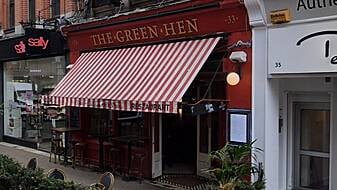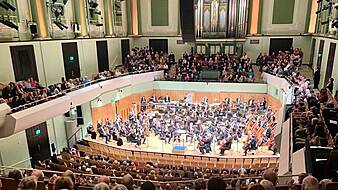The European Central Bank left its key interest rate benchmark unchanged on Thursday as its rate-setting council and president Christine Lagarde take their time to make sure inflation is under control before lowering rates again.
The decision leaves the deposit rate at 3.75 per cent, where it has stood after a single quarter-point rate cut at the previous meeting on June 6th.
That means homebuyers and businesses hoping for lower interest rates in Europe are going to have to wait at least until the bank’s September meeting for more affordable credit – and possibly even longer than that.
Ms Lagarde would not commit to a rate cut even at the September 12th meeting, saying that “the question of September and what do we do in September, is wide open and will be determined on the basis of all the data that we will be receiving” ahead of the meeting.
We kept our key interest rates unchanged.
Our rates are still high, helping push down inflation.
This is still needed because inflation is likely to stay above our 2% target well into next year.
Read today’s monetary policy decisions https://t.co/st6SRZKuYW pic.twitter.com/zZqpBbzo5vAdvertisement— European Central Bank (@ecb) July 18, 2024
She was asked at her post-decision news conference about the potential impact of higher US tariffs on imports if former US president Donald Trump is re-elected in November.
“I’m not going to speculate on political developments,” she said.
“Of course, we have to take into account the consequences of, for instance, the increase in tariffs or policies that are determined, outside the euro area, by any country with which we have either strong trade or financial links,” she said.
She added that “obviously, given the size of the US financial markets in particular, the developments taking place in the United States will be very carefully assessed to see what consequences it might have on the European Union and on the euro area in particular”.
The ECB’s stance for now resembles that of the US Federal Reserve, which is expected to hold off lowering rates at its next meeting on July 30th-31st, though the Fed appears closer to cutting rates after that than is the ECB.
We will keep policy rates sufficiently restrictive for as long as necessary, said President @Lagarde at today’s press conference, after the Governing Council decided to keep key interest rates unchanged.
Watch the press conference https://t.co/t8cQxSCSop pic.twitter.com/bZXX8DmUVl— European Central Bank (@ecb) July 18, 2024
The ECB, Fed, Bank of England and other central banks around the developed world sharply raised rates to quell an outburst of inflation that followed Russia’s invasion of Ukraine and the end of the pandemic.
Higher rates make it more expensive to borrow money, spend and invest, cooling off demand for goods and, historically, the upward trend for consumer prices.
Inflation in the eurozone has fallen from a peak of 11.6 per cent in October 2022 to 2.5 per cent in June, slowly approaching the ECB’s goal of 2% considered best for the economy.
But the last mile has been tough. The inflation figure has been stuck between 2 and 3 per cent for months.
Workers have been negotiating higher wages to make up for lost purchasing power during the inflation spike, and annual prices increases remain too high at 4.1 per cent last month in the crucial services sector – a broad swathe of the economy that includes cinema tickets, restaurants, medical treatment and haircuts.
Meanwhile, higher rates have slowed growth, which is in short supply in the eurozone.
Gross domestic product grew a tepid 0.3 in the first three months of the year after months of stagnation around zero.
The anti-inflation campaign has killed off a years-long rally in eurozone house prices, as mortgage costs weigh on home sales.
The ECB can point, however, to a strong jobs market with low unemployment as a sign that higher rates are not sending the economy into a recession.
In the US, Fed chair Jerome Powell said on Monday that the Federal Reserve is becoming more convinced that inflation is headed back to its 2 per cent target and said they would cut rates before the pace of price increases actually reached that point.
Recent figures, he said, “do add somewhat to confidence” that inflation is slowing sustainably.
Annual inflation was 3 per cent in June, down from 3.3 per cent in May.
Most economists foresee a first cut in September, and after Mr Powell’s remarks Wall Street traders boosted their expectation that the Fed would reduce its key rate then from its 23-year high of 5.25-5.5 per cent.
The futures markets expect additional rate cuts in November and December.







